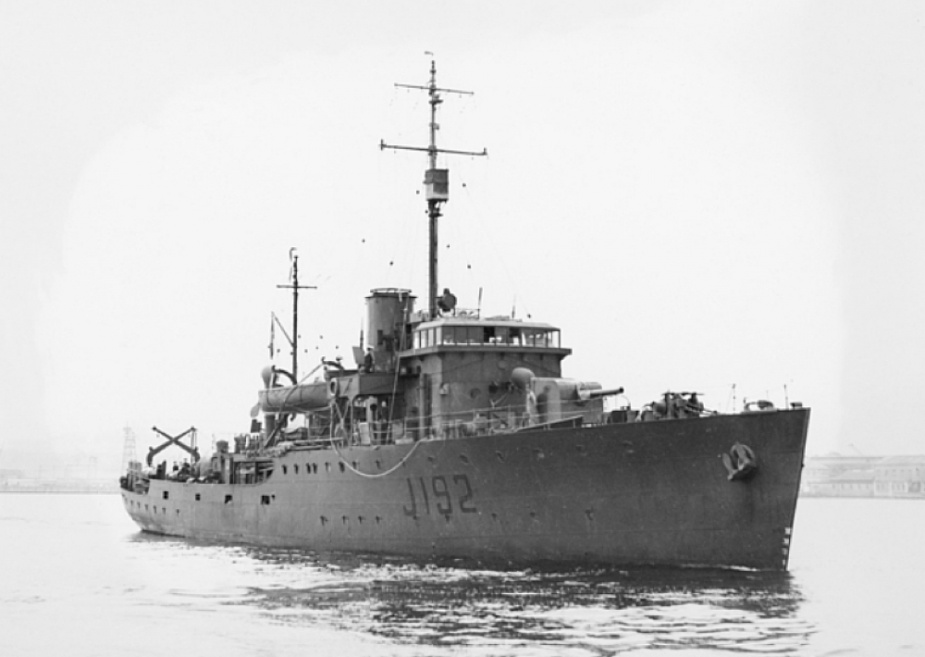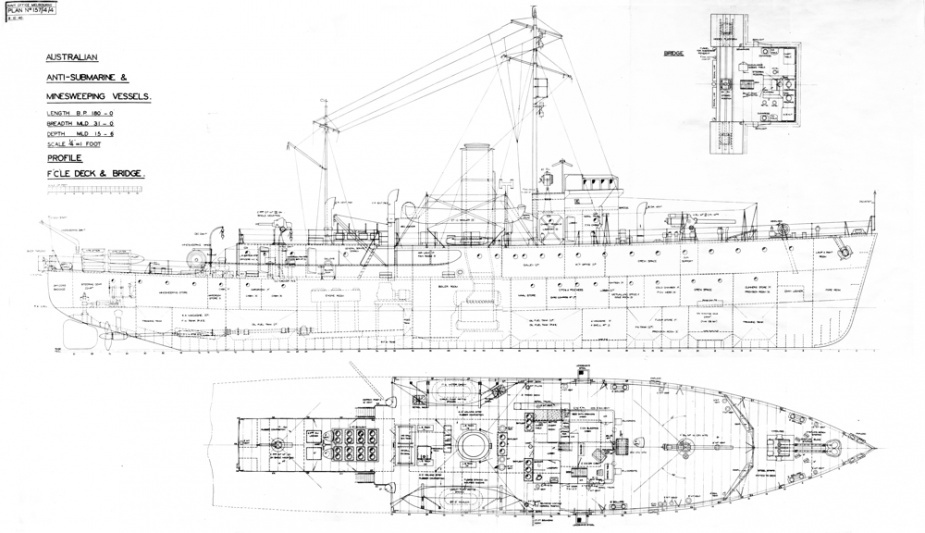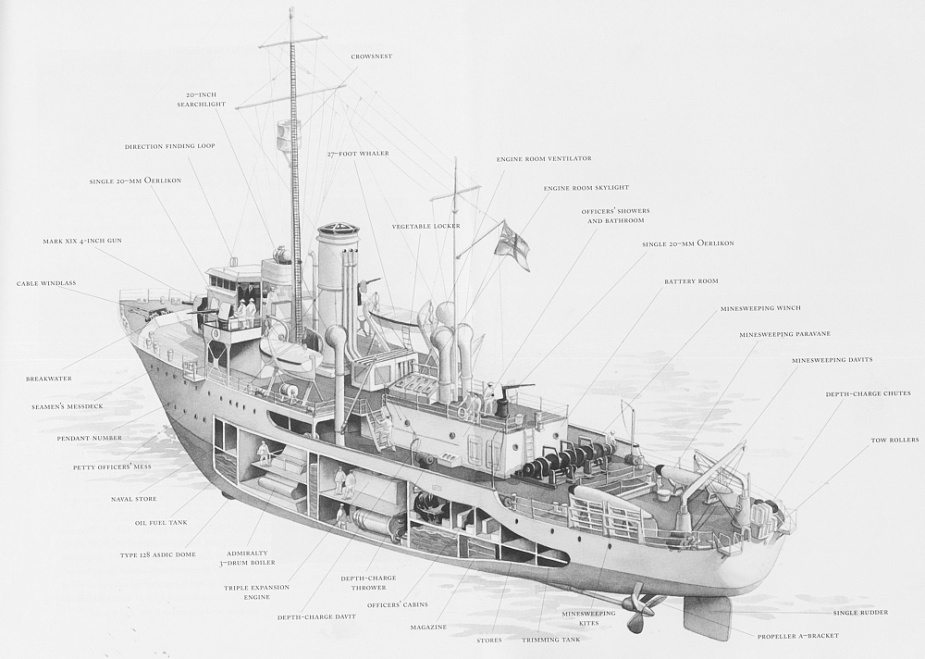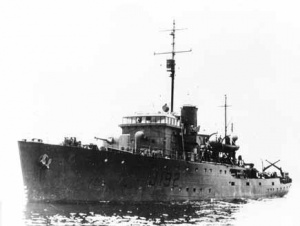
Starboard view of Kalgoorlie wearing the pennant number J192. It is armed with a 4-inch gun forward and 3 single 20mm oerlikon AA guns in the bridge wings and AFT. It is camouflaged in an all over dark grey paint scheme. Note the buildings of Garden Island, Sydney in the background.
In November 1942 Kalgoorlie operated in support of Operation LIZARD III, a clandestine Services Reconnaissance Department operation in Timor. During the following month, December 1942 and under sporadic air attack, it searched for survivors of HMAS Armidale, which had been sunk on 1 December, rescuing 20 personnel from a damaged motor boat on 6 December. Three days later it rescued a further 29 survivors from Armidale’s whaler.
Kalgoorlie continued to escort convoys between Darwin and Thursday Island until late February 1943 when it returned to the Australian east coast. From April to December 1943, Kalgoorlie escorted convoys on the east coast of Australia.
During this period only one ship in a convoy escorted by Kalgoorlie was lost by enemy action. Convoy GP55 departed Sydney for Brisbane on 15 June 1943, and comprised 10 merchant ships, 3 American Landing Ships Tank (LSTs), and was escorted by Kalgoorlie and ships of the same class HMA Ships Warrnambool, Deloraine, Cootamundra and Bundaberg.
On 16 June, with the convoy east of Smoky Cape, the SS Portmar was struck by a torpedo and sank within 10 minutes. LST 469 was damaged by another torpedo and towed to the safety of port. Kalgoorlie then conducted an unsuccessful search for the attacking submarine throughout the following days.
Between January and June 1944 Kalgoorlie carried out escort duties between north Queensland ports and New Guinea. It reverted to the east coast of Australia for the remainder of the year, with the occasional visit to New Guinea.
In August and September 1944, Kalgoorlie and ships of the same class HMAS Pirie commenced the clearance of defensive minefields that had been laid in the through the Great Barrier Reef by HMAS Bungaree in 1942 and 1943. A total of 491 mines were swept during these initial mine clearance operations.
In December 1944 Kalgoorlie joined the 21st Minesweeping Flotilla, British Pacific Fleet. In January 1945 it visited Hobart and in late February sailed for the forward areas, reaching Ulithi Atoll on 24 March 1945 and Leyte Gulf in the Philippines on 31 March.
Kalgoorlie continued to operate in the forward areas until it arrived in Brisbane of 15 July 1945 for refit. It was still in refit at Brisbane when hostilities ceased on 15 August 1945.
Departing Brisbane on 26 September 1945, Kalgoorlie returned to New Guinea waters. It returned to Australian waters in January 1946 and between 2 and 10 March 1946 visited Esperance in Western Australia to pay a visit to its namesake town of Kalgoorlie.
Kalgoorlie was tranferred to the Royal Netherlands Navy and was renamed Ternate. A 40mm bofors AA gun has replaced the after 20mm oerlikon AA gun. The oerlikons in the bridge wings have been retained.s
Kalgoorlie paid off at Melbourne on 8 May 1946, having steamed 131 607 miles. On the same day Kalgoorlie was transferred to the Royal Netherlands Navy and renamed Ternate.


